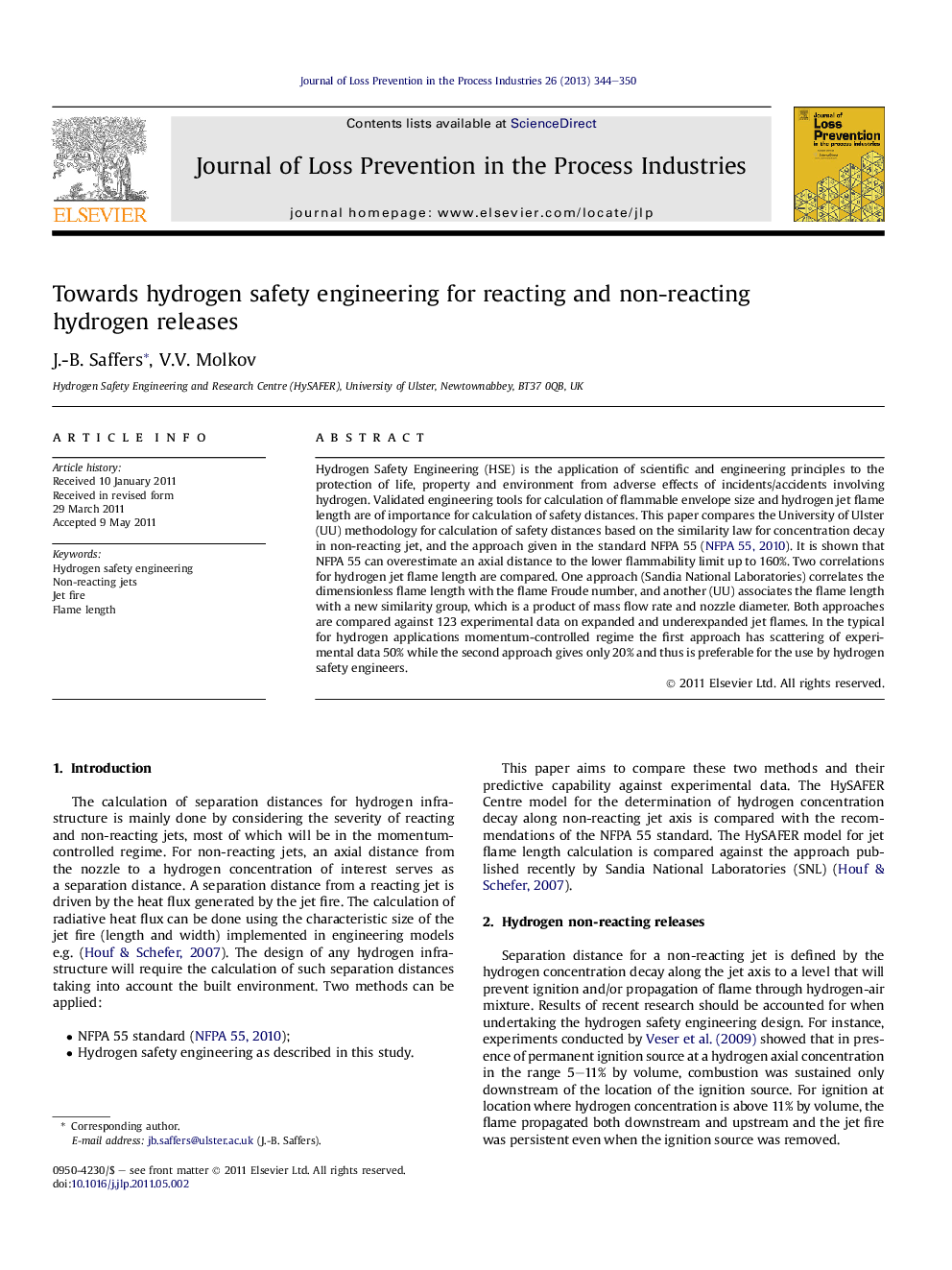| کد مقاله | کد نشریه | سال انتشار | مقاله انگلیسی | نسخه تمام متن |
|---|---|---|---|---|
| 586903 | 878238 | 2013 | 7 صفحه PDF | دانلود رایگان |

Hydrogen Safety Engineering (HSE) is the application of scientific and engineering principles to the protection of life, property and environment from adverse effects of incidents/accidents involving hydrogen. Validated engineering tools for calculation of flammable envelope size and hydrogen jet flame length are of importance for calculation of safety distances. This paper compares the University of Ulster (UU) methodology for calculation of safety distances based on the similarity law for concentration decay in non-reacting jet, and the approach given in the standard NFPA 55 (NFPA 55, 2010). It is shown that NFPA 55 can overestimate an axial distance to the lower flammability limit up to 160%. Two correlations for hydrogen jet flame length are compared. One approach (Sandia National Laboratories) correlates the dimensionless flame length with the flame Froude number, and another (UU) associates the flame length with a new similarity group, which is a product of mass flow rate and nozzle diameter. Both approaches are compared against 123 experimental data on expanded and underexpanded jet flames. In the typical for hydrogen applications momentum-controlled regime the first approach has scattering of experimental data 50% while the second approach gives only 20% and thus is preferable for the use by hydrogen safety engineers.
► Validation of similarity law on hydrogen concentration decay in sonic jets.
► Flame length is function of product of mass flow rate and physical nozzle diameter.
► Comparison with experiments gives an empirical correlation in the formLf=54(m˙·dnoz)0.312.
► Both models are compared with the NFPA 55 (2010).
► The predictive capabilities of the HySAFER models are better.
Journal: Journal of Loss Prevention in the Process Industries - Volume 26, Issue 2, March 2013, Pages 344–350